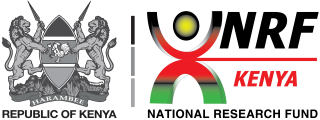Browsing by Author "Swaleh Miriam"
Now showing 1 - 1 of 1
Results Per Page
Sort Options
Publication Effect of Selected Environmental factors on Microalgae Diversity and Abundance in Gazi Bay, South Coast Kenya(Journal Of Sea Research, 2022-06) Swaleh Miriam; Abubakar Laila; Mwaguni Saeed; Munga Daniel; Okuku Erik; Dzoga Mumini; Fulanda AlexanderAbstract Microalgal community structure of Gazi Bay, Kenya and association with environmental factors was studied between February, June 2019 and October 2020. Non-Metric Multidimensional Scaling (NMDS) and the Rarefaction curves were used for the analysis of community structure; while Principal Component Analysis (PCA) was used to determine correlation between environmental factors with abundance and species diversity of microalgae. A total of 79 microalgae species belonging to 10 classes were recorded, with diatoms dominating in all the sampling sites. The three most abundant species of microalgae observed were Scripssiela sp, Peridinium quinqeucorne, and Striatella sp. There was temporal and spatial distribution of microalgae in the study area. Microalgae abundance ranged from 942 cells/L to 14,990 cells/L, with the highest mean abundance recorded in February during the dry season. Western creek indicated the highest abundance and species diversity compared to other stations at the bay with a significant difference in sample compositions (R = 0.236, P = 0.002). Pearson correlation coefficient showed that the environmental parameters; Total Dissolved Substances (0.61) and salinity (0.59) had a positive correlation with microalgae abundance. This relationship was significant at p < 0.05 for N = 12. In addition, these parameters had a strong influence on microalgae composition and abundance in the Western creek at Gazi Bay. While the microalgae in Mapononi and Doa were influenced by nitrate levels and pH respectively. Gazi Bay is recognized as an important breeding site for fisheries in the south coast of Kenya. Therefore, our findings may be useful in identifying areas within the bay that may be conserved in order to sustain the coastal community livelihood, and justify effective management of hinterland activities to minimize eutrophication.
